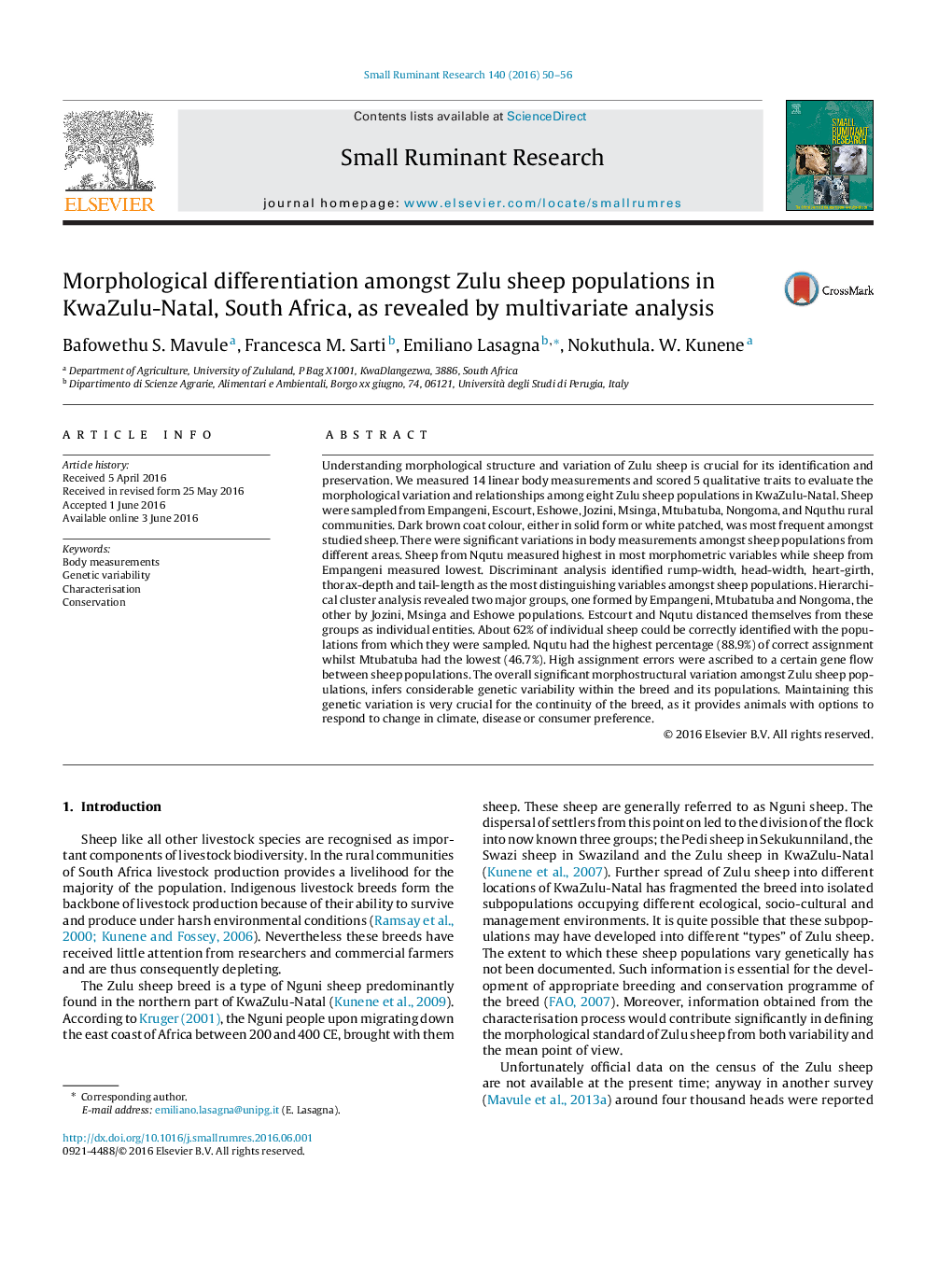| کد مقاله | کد نشریه | سال انتشار | مقاله انگلیسی | نسخه تمام متن |
|---|---|---|---|---|
| 2456650 | 1554352 | 2016 | 7 صفحه PDF | دانلود رایگان |
• The morphological variation amongst Zulu sheep populations was analysed.
• 14 linear body measurements and 5 qualitative traits were recorded.
• Some distinguishing variables were identified through discriminant analysis.
• About 62% of individual sheep are correctly identified in the population.
• Maintaining the genetic variation is crucial for the continuity of the breed.
Understanding morphological structure and variation of Zulu sheep is crucial for its identification and preservation. We measured 14 linear body measurements and scored 5 qualitative traits to evaluate the morphological variation and relationships among eight Zulu sheep populations in KwaZulu-Natal. Sheep were sampled from Empangeni, Escourt, Eshowe, Jozini, Msinga, Mtubatuba, Nongoma, and Nquthu rural communities. Dark brown coat colour, either in solid form or white patched, was most frequent amongst studied sheep. There were significant variations in body measurements amongst sheep populations from different areas. Sheep from Nqutu measured highest in most morphometric variables while sheep from Empangeni measured lowest. Discriminant analysis identified rump-width, head-width, heart-girth, thorax-depth and tail-length as the most distinguishing variables amongst sheep populations. Hierarchical cluster analysis revealed two major groups, one formed by Empangeni, Mtubatuba and Nongoma, the other by Jozini, Msinga and Eshowe populations. Estcourt and Nqutu distanced themselves from these groups as individual entities. About 62% of individual sheep could be correctly identified with the populations from which they were sampled. Nqutu had the highest percentage (88.9%) of correct assignment whilst Mtubatuba had the lowest (46.7%). High assignment errors were ascribed to a certain gene flow between sheep populations. The overall significant morphostructural variation amongst Zulu sheep populations, infers considerable genetic variability within the breed and its populations. Maintaining this genetic variation is very crucial for the continuity of the breed, as it provides animals with options to respond to change in climate, disease or consumer preference.
Journal: Small Ruminant Research - Volume 140, July 2016, Pages 50–56
